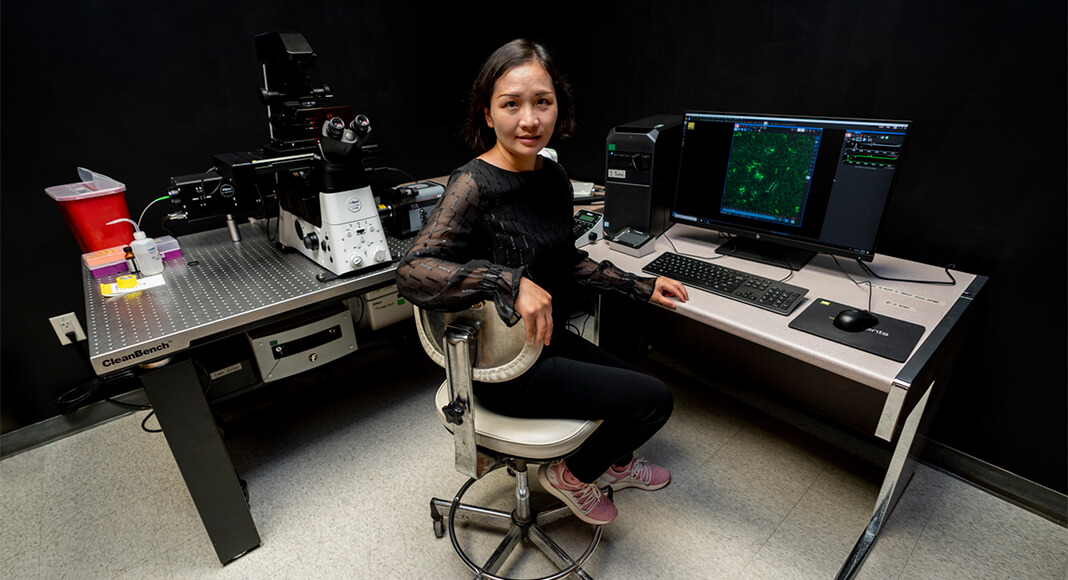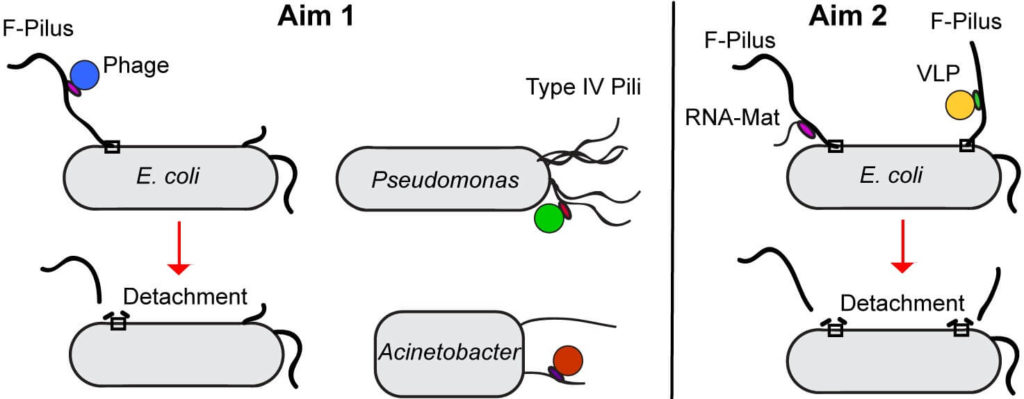
Mega Doctor News
The National Institute of Allergy and Infectious Diseases, NIAID, part of the National Institutes of Health, NIH, has awarded $2.5 million in grants to support research on bacteriophage therapy, and Texas A&M AgriLife Research is among the grant recipients.
Bacteriophage therapy is an emerging field that many researchers think could yield novel ways to fight antimicrobial-resistant bacteria. A Centers for Disease Control and Prevention report from 2019 showed antibiotic-resistant pathogens cause more than 2.8 million infections and more than 35,000 deaths annually in the U.S.
The new NIAID grants support research to address key knowledge gaps in the development of phages as preventive and therapeutic tools for bacterial infections. The AgriLife Research grant will provide two years of funding for research to help fill key knowledge gaps.
How phages can combat bacterial infections
Bacteriophages, or phages, are viruses that can kill or incapacitate specific kinds of bacteria while leaving other bacteria and human cells unharmed. Phages have been used to treat antibiotic-resistant infections, and researchers believe phages could be used in combination with antibiotics to help prevent bacteria from becoming drug resistant.
“If phages can be used to disarm bacteria, then this might be a gentler way to treat infections,” said Lanying Zeng, Ph.D., associate professor in the Department of Biochemistry and Biophysics at Texas A&M University, Bryan-College Station. Zeng is one of the principal investigators for the NIH-funded AgriLife Research study. She is also a core faculty member of the Center for Phage Technology, part of AgriLife Research.
In the newly funded project, Zeng and co-principal investigator Junjie Zhang, Ph.D., also in the Department of Biochemistry and Biophysics, will investigate how to reduce bacterial virulence by using phages to suppress pili — cylindrical structures on the surface of bacteria used for gene transfer and other functions.
Zeng said using phages to target pili could boost the action of existing antibiotics and possibly reduce the typical antibiotic dosage. She also noted that using these types of phages may give the immune system more time to fight off infection.
“And unlike traditional phage therapy, this will not kill the cell; it will just disarm it,” she said. “Killing the cell may cause a problem, because inside the cell there may be toxins that could be released into the host.”
Leading up to the research
The new research builds on a previous discovery made from an AgriLife Research-led study published in the Proceedings of the National Academy of Sciences in September 2020. That study showed certain phages cause pili to detach as the phages infect E. coli.
In this previous research, fluorescence microscopy was used to see how a specific type of phage, whose genome consists of single-stranded RNA, enters an E. coli cell. The team created fully infectious and stable fluorescent phages that, when attached to the pili on E. coli cells, made the pili visible through a fluorescence microscope.
“We found that phages MS2 and Q-beta bind to the side of pili and can detach them,” Zeng said. “The MS2 phage was able to detach them at a rate of about 45% and the Q-beta phage was able to detach them at a rate of about 30%. This finding that single-stranded RNA phages can detach pili was surprising, partly because they have been underexplored, because they are so extremely small.”
She explained that after a phage attaches to a pilus on the surface of a bacterium, the pilus retracts, bringing the phage to the cell surface. The pilus then breaks off behind the phage.
“Healthy E. coli replenish broken pili, but cells infected by MS2 and Q-beta do not,” Zeng explained. “Once the first phage infects the cell, the pili break off and the cell doesn’t make new ones. This seems to be a way in which phages ‘tag’ the cell as theirs, keeping other phages from infecting the cell and providing them with a competitive advantage.”
She said because this action gives such an advantage to the infecting phage, her team also wanted to know if this phenomenon may be widespread among other phages and if it could be a key in the development of ways to treat antibiotic-resistant infections.
“Some bacterial infections only respond to high doses of antibiotics, which can cause side effects,” she said. “Adding phages to the mix may allow doctors to decrease the needed antibiotic dosage.”

“Our overarching goal is to establish phage or phage-based systems to efficiently detach retractile pili as an effective antibacterial strategy,” Zeng said.
She said one aim will be to further investigate the mechanism of detachment by single-stranded RNA phages of one type of pilus, the F-pilus.
In bacterial genetics, the F-pilus is a hollow tube on male cells, and these connect with the female cell for transfer of genetic material. These are also called “sex pili” because they allow for the exchange of genes via the formation of mating pairs.
“In non-laboratory conditions, it could be that the maximum number of F-pili a cell can produce is one,” Zeng said. “So, if you can detach that one pilus, it would be a very positive result in that context.”
F-pili are just one type of pili used by bacteria, Zeng said. For example, bacteria also use “Type 4” pili to move around.
“Other pili, such as the Type 4, are for motility and are also important for virulence,” she said. “If bacteria can’t move, there is no virulence.”
She said in their study the researchers also hope to learn more about the different pili, including how many are made, their physical length and at what rate they detach.
“Because F-pili are used for conjugation, not all of them will be in that mode when they come into contact with the phages and, therefore, will not retract,” she noted. “In addition, some pili may not retract at all, and those would be harmless. Through our research, we just want to identify and detach those pili that are active — and find out how to do so with optimal efficiency.”
Developing a simpler system
Another aim of the project research will be a cryo-electron microscopy study of a simpler system for creating virus-like particles that would be effective in removing pili. Zhang will be primarily responsible for this portion of the research.
“Our goal is to reveal and assemble essential phage components for efficient pili detachment,” Zhang said. “We will use cryo-electron microscopy to extract three-dimensional structural knowledge of the interaction interface between phages and their host pili. Our initial focus will be on the model phages MS2 and Q-beta, and their host F-pili. Based on this knowledge, we will be able to engineer new phage components that can more effectively detach F-pili.”
The researchers will also investigate other single-stranded RNA phages to find out whether they too are able to detach the pili of other pathogenic bacteria.
Novel aspects of the new research
“There are a number of unique and cutting-edge features to this project,” Zeng noted. She identified some of its novel aspects as:
— The use of a totally new method of targeting pili in a way that does not exert selective pressure on the host, thereby reducing the bacteria’s potential to further develop antibiotic resistance.
—The construction of single-stranded RNA phage-based minimal systems to efficiently detach retractile pili.
—The use of advanced fluorescence microscopy and cryo-electron microscopy modeling approaches that also can be applied to gauge the single-stranded RNA phage/pili interactions of various pathogenic bacteria.
“We expect this new research will have a significant impact on finding ways to reduce or eliminate the dissemination of antibiotic-resistant genes and other virulence factors,” she said.










